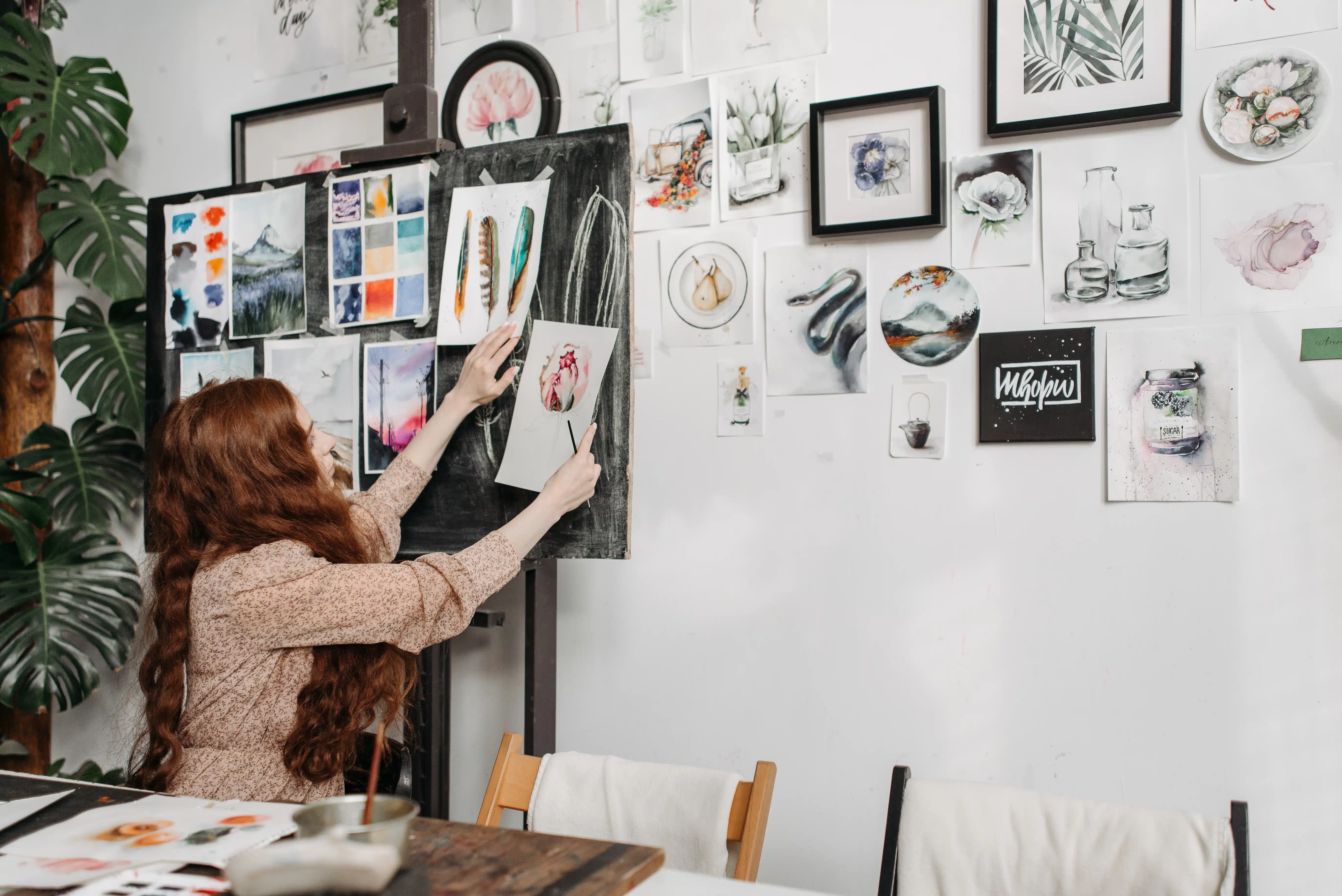When thinking about your brand, many times words and feelings come to mind. But how do you turn that inspiration into a well-organized base for any design project? A great way to achieve this is by creating a mood board.
What is a mood board?
Mood boards are a collection of different design elements organized into a collage. Many times we may have an overall feel or design concept in our heads, but these descriptions are abstract until placed into a tangible format. They are a powerful tool to begin the ideation process for any design project, both for the client and the designer. Essentially, mood boards are a way to establish a style before any real design work is done. This ensures the aesthetic is consistent with a client’s goals and expectations. It also outlines the style of any future designs. By setting aside time to create a mood board, the design process of a project goes more smoothly. A mood board creates a bridge between the client and the designer. They are also a great way for a design team to get excited about an upcoming project!
What is normally included in a mood board?
Images, photography, and illustrations: Photos, illustrations, and packaging are great things to include and usually make up the bulk of a mood board. Color Palettes: Colors are a powerful tool in evoking a certain emotion in people. Incorporating color palettes is one of the easiest ways to convey your message without words. Descriptors: Words that tie into the brand or message that should be conveyed can be an important part of any mood board. Typography: Fonts are also an important element as they do have a correlation to different styles and emotions. A script font may make you feel lighthearted and playful, meanwhile, a bold serif gives off a more serious, sophisticated vibe. Textures: From real fabric swatches to drawn textures and patterns, these are great elements to give some dimension to the mood board.
A branding mood board Glass Ivy created for a client
The Process of creating a Mood Board.
Mood boards can be physical like pinning inspiring images to a wall or whiteboard. They can also be created digitally by compiling the inspiration and creating a kind of art piece out of it. Designers usually create these in Illustrator or Photoshop. Additionally, there are free resources available such as Canva and Adobe Express. But what is the actual thought process behind creating a mood board?
Where to Start
First, come up with a general theme. Most likely you have a general idea. Think of the first words that come to mind in association with this idea. For example, if branding a floral shop and you wanted to go with a floral theme, some words would be: feminine, playful, hand-drawn flowers. Search the web or if you’re creating a physical mood board, look at a few books or magazines. The idea is to begin the inspiration process.
Spice It Up
Next, collect the elements necessary. With your associated words, begin to collect your images, typography, colors, textures, and any other thing that you feel ties to the mood you’re trying to convey. Try to choose images that have a more abstract association with the mood. For example, if you were trying to evoke luxury, think about what the ideal customer would look like and include them.
Finishing Touches
Once you have your elements ready, review and reduce them until you have a concise collection of elements. Think of the mood board through the eyes of someone who has never come in contact with the brand or project. Include enough elements that someone can get the gist just from viewing the board. Create a cohesive color palette of at least five key colors. If you’re working with a physical mood board, clip some paint swatches and magazine cuttings to create one.
Sit Back and Enjoy!
When you’re finished, you have your very own design piece come to life that will help inform future projects. Ultimately, design is all about creating resourceful solutions to challenges. The more time we spend at the beginning of a project mapping out the solution, the more successful the final outcome. With a clear visual guide, the project is much more likely to stay on track and ultimately have a better outcome.
Interested in getting a mood board to guide your brand? The design team at Glass Ivy is experienced in creating the best solution to any design problem. Contact us to begin your design project today.


